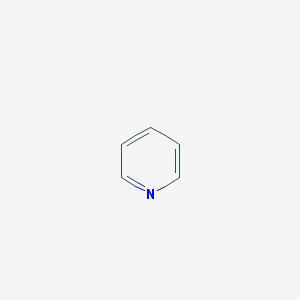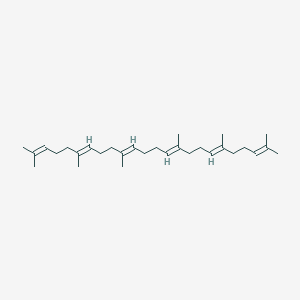Calcium antagonist treatment of coronary heart disease status is difficult to shake
-
Last Update: 2020-07-03
-
Source: Internet
-
Author: User
Search more information of high quality chemicals, good prices and reliable suppliers, visit
www.echemi.com
decidica calcium antagonist (CCB) is a commonly used drug for the treatment of chronic stable angina, which has been used in clinical practice for more than 40 yearsMore than a decade ago, however, a storm over CCB safety took a heavy hit, severely undermining the CCB's therapeutic statusWith the accumulation of evidence-based medical evidence, all kinds of suspicions and accusations have been clarified, and the relevant authoritative guidelines published in China and Europe in 2007 reaffirmed the effectiveness and safety of CCB in the treatment of coronary heart disease patientsIn 1966, the world'
s first dihydropyrine CCB nitrobenzene was introduced, and its significant coronary artery dilation made it the first to be used to treat anginaIn the early 1980s, a number of clinical studies confirmed that nitrobenzene can effectively control the symptoms of mutant angina and chronic stable anginaSince then, CCB has quickly become one of the most commonly used drugs to fight anginaIn 1995, a number of epidemiologists, led by Furberg, published several articles, based on case-control data on short-acting nitrosyphenic, accusing CCB of increasing the risk of myocardial infarction and death in coronary heart disease patients and extending the strike surface to all types of CCB preparationsSuch accusations have had a serious negative impact, coupled with the problems of drug safety, which are related to the lives of millions of patients, so authorities can only take the "burden of proof inversion" approach and issue a hasty statement warning physicians that the use of CCB must be very carefulThe latest guidelines affirm safety and efficacy
published in 2007 China's first "Chronic stable angina diagnosis and treatment guidelines" (hereinafter referred to as the Chinese guidelines for angina) clearly affirmed the safety of CCB and treatment effectivenessThe 2007 new guidelines for the prevention and treatment of high blood pressure inby the European Society ofCardiology andof Cardiology and the European Society of Hypertensi
on (ESC/ESH) (hereinafter referred to as the European Guidelines for Hypertension) also recognized CCB's therapeutic status in patients with coronary heart disease The Chinese Angina Guide is a group of experts composed of the Chinese Medical Association Cardiovascular Society and the editorial board of the Chinese Journal of Cardiovascular Disease, on the basis of collecting evidence of evidence-based medicine, with reference to the widely used guidelines abroad, combined with the actual situation of our country, which lasted more than 1 year, after repeated discussion, and made several easy drafts The guidelines take into account the latest evidence-based medical evidence, recommending long-acting CCB as an initial treatment for coronary heart disease patients with combined high blood pressure (Class I, Class B evidence level) rather than just a substitute drug This is a highlight of China's angina guide European hypertension guidelines state that patients with coronary heart disease can benefit from antihypertensive treatment, and that it is not particularly important to use drugs to lower blood pressure, and that allegations that CCB are detrimental to coronary heart disease patients have been overturned This is the first time that foreign authorities have explicitly expressed support for the use of CCB in patients with coronary heart disease after the CCB storm The ACTION test is the main basis for affirming calcium antagonists
Professor Gao Runxuan, a well-known cardiovascular expert in China, pointed out that, in view of the evaluation test (ACTION) on the treatment of coronary heart disease from nitrobenzene, the nitrobenzene-controlled release tablets show that the nitrobenzene-controlled release tablets can reduce vascular reconstruction, and subgroup analysis shows that for patients with coronary heart disease with combined hypertension, the relative risk of asomic events in the first stage of the event is reduced, so the Chinese acolic guidelines recommend that CCB as an initial treatment After the CCB storm in 1995, randomized clinical trials such as Syst-Eur, INSIGHT and ALLHAT were designed and implemented, which fully confirmed that the safety of long-acting CCB was unquestionable in the field of hypertension treatment, and that the effectiveness of CCB in reducing major cardiovascular events and mortality rates was fully demonstrated Some of the patients with hypertension included in the above trials were accompanied by coronary heart disease However, the main basis for the real evidence of the safety of long-acting CCB in patients with coronary heart disease comes from ACTION The ACTION trial is the only large-scale, randomized, double-blind, placebo-controlled clinical study in patients with chronic stable angina to date The trial included 7,665 patients with symptomatic stable angina who were randomly assigned to be treated with nitrobenzene-controlled release tablets or placebos for an average follow-up of 4.9 years The results showed that the long-term treatment of nitrosathyl-controlled release tablets did not increase the incidence of total death, myocardial infarction or disabling stroke compared to placebo In addition, nitrobenzene-controlled release tablet therapy significantly reduced the incidence of secondary endpoint events (death, cardiovascular events or interventional therapy) In the individual clinical events, the nitabenzene group had 9% new centricostrength, 18% less coronary artery angiography, 21% of coronary artery bypass, and 28% fewer stroke events In patients with combined hypertension (3977 cases), nitrobenzene-controlled release significantly reduced the rate of first-level endpoint events and significantly reduced the incidence of all pre-determined secondary endpoint events for various cardiovascular diseases In short, the main clinical significance of the ACTION trial is 3 points: nitrobenzene flat-controlled release tablets for long-term patients with coronary heart disease is safe, will not increase the occurrence or mortality of myocardial infarction; The ACTION trial is the most convincing clinical trial that has shown that CCB can be safely used in patients with coronary heart disease On this basis, the ammonia chlorite flat and Inapri limit thrombosis event comparison test (CAMELOT) further confirmed the safety of CCB The trial included 1991 patients with coronary heart disease (diagnosis standard , the contrast showed at least one coronary artery stenosis of 20 percent), and they were randomly assigned to three treatment groups in the ammonia chlorpyrifos (10 mg/day), Inapuri (20 mg/day) or placebo group The main purpose of the study was to compare the incidence of primary endpoint events in the apobo-level group, including cardiovascular death, myocardial infarction, cardiac arrest, coronary artery reconstruction therapy, angina hospitalization, hospitalization for heart failure, stroke, anterior episode of an terroun (TIA), and of peripheral vascular disease The results showed that the incidence of cardiovascular disease in the ammonia chlorolevel group and the placebo group were 16.6% and 23.1%, respectively The main efficacy of ampicillin was reduced in coronary artery reconstruction treatment and angina hospitalization rates, and other events (including total mortality, stroke, and myocardial infarction) were not lower than in the placebo group To sum up, the Chinese angina guidelines recommend long-acting CCB as the initial treatment for patients with coronary heart disease with high blood pressure, and the European Hypertension Guidelines reject the allegation that CCB is disadvantageous to coronary heart disease patients These important guidelines, published in 2007, have greatly enhanced CCB's therapeutic position ACTION trial, this well-designed random, double-blind clinical study effectively confirmed that long-acting dihydroquine CCB can be safely used in patients with coronary heart disease, anti-angina effect is good, but also to reduce cardiovascular events The CAMELOT test, although not of high quality, can support the evidence of action test results Therefore, the status of CCB in the treatment of coronary heart disease is still difficult to shake, clinicians at all levels should seriously study the guidelines, with a variety of drugs, including CCB, so that more patients with coronary heart disease get more effective treatment (Shi Zhongwei)
This article is an English version of an article which is originally in the Chinese language on echemi.com and is provided for information purposes only.
This website makes no representation or warranty of any kind, either expressed or implied, as to the accuracy, completeness ownership or reliability of
the article or any translations thereof. If you have any concerns or complaints relating to the article, please send an email, providing a detailed
description of the concern or complaint, to
service@echemi.com. A staff member will contact you within 5 working days. Once verified, infringing content
will be removed immediately.







